Name Mirra Alfassa Structures Matrimandir | Role Poet | |
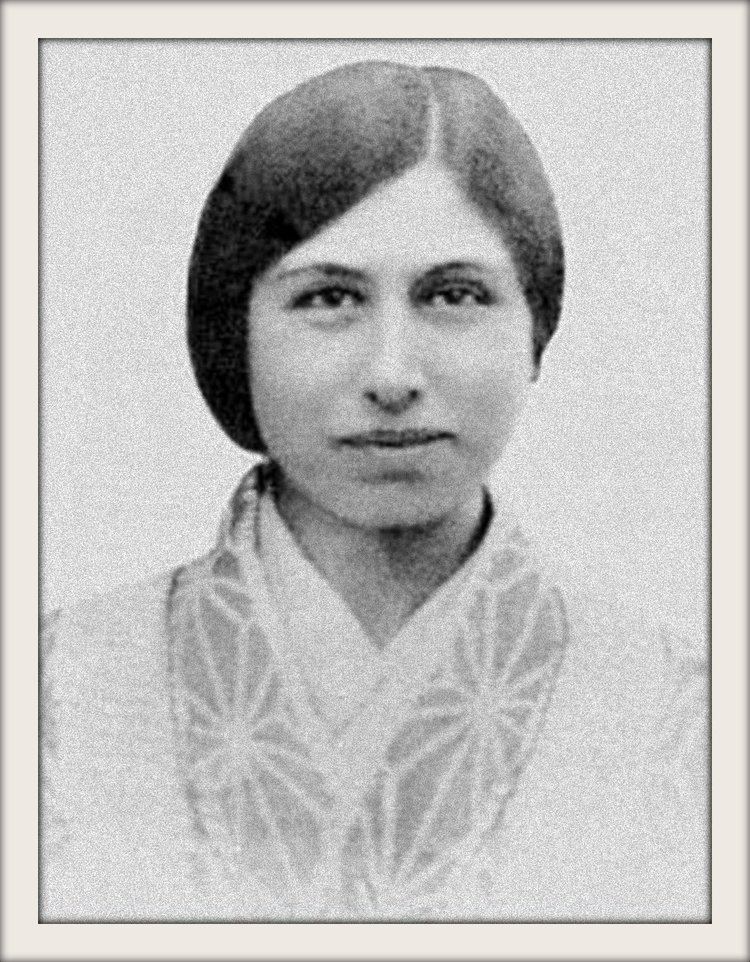 | ||
Born 21 February 1878 Paris, France Occupation Spiritual collaborator of Sri Aurobindo Died November 17, 1973, Pondicherry Parents Moise Maurice Alfassa, Mathilde Ismalun Books The Sunlit Path, Collected Works of the Mother, Flowers and Their Messages, Mantras of the Mother: Part II, Felicity Eternal: The Seve Similar People Sri Aurobindo, Roger Anger, Pavitra | ||
Mirra alfassa the mother 1878 1973
Mirra Alfassa (21 February 1878 – 17 November 1973), known to her followers as The Mother, was the spiritual collaborator of Sri Aurobindo. Her full name at birth was Blanche Rachel Mirra Alfassa.
Contents
- Mirra alfassa the mother 1878 1973
- Sri aurobindo ashram video the mother glimpses of he
- Early life
- Meeting Sri Aurobindo Ghose
- Ashram foundation
- Work of Physical Transformation
- Auroville
- References
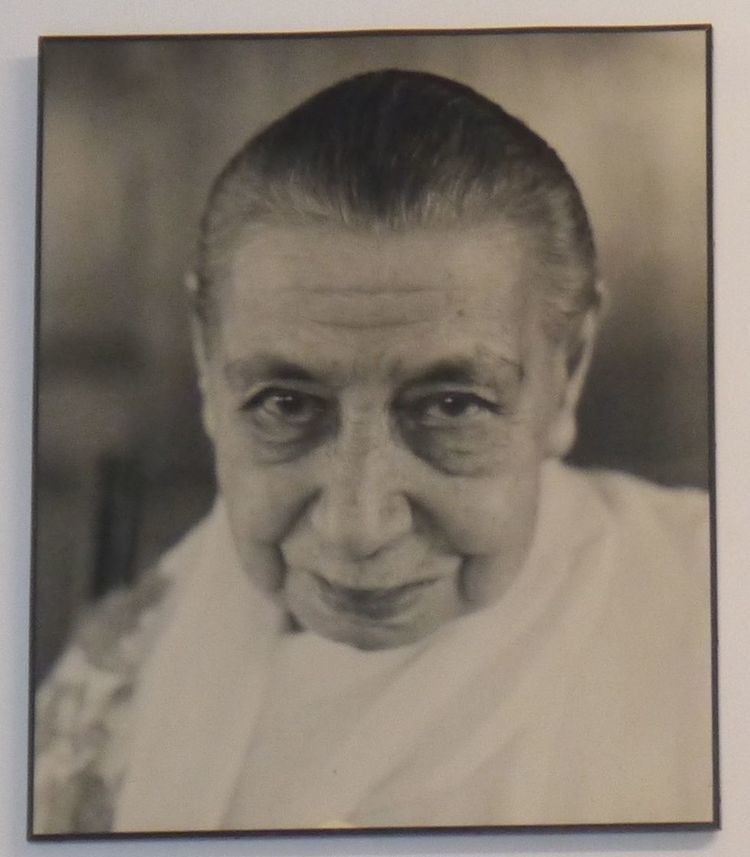
She came to Sri Aurobindo's spiritual retreat on 29 March 1914 in Pondicherry, India. Having to leave Pondicherry during World War I, she spent most of her time in Japan where she met poet Rabindranath Tagore. Finally she returned to Pondicherry and settled there in 1920. After 24 November 1926, when Sri Aurobindo retired into seclusion, she founded her ashram (Sri Aurobindo Ashram), with a handful of disciples. She became the spiritual guide of the community.
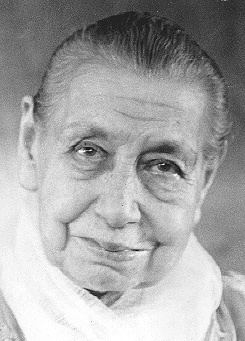
The experiences of the last thirty years of Alfassa's life were captured in the 13-volume work The Agenda. In those years she attempted the physical transformation of her body in order to become what she felt was the first of a new type of human individual by opening to the Supramental Truth Consciousness, a new power of spirit that Sri Aurobindo had allegedly discovered. Sri Aurobindo considered her an incarnation of the Mother Divine and called her by that name: The Mother.
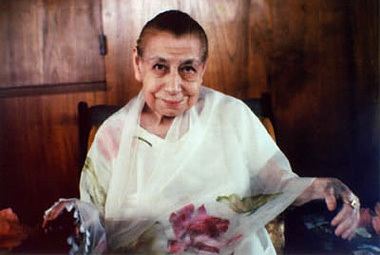
Sri aurobindo ashram video the mother glimpses of he
Early life
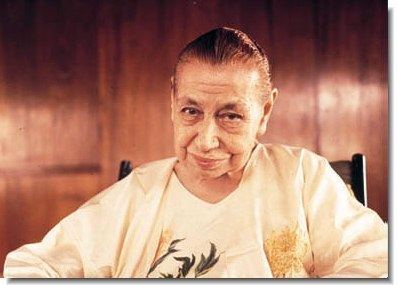
Mirra Alfassa was born in Paris in 1878, of a Turkish Jewish father, Moise Maurice Alfassa (5 July 1843 - 13 September 1918), and an Egyptian Jewish mother, Mathilde Ismalun (26 August 1857 - 9 December 1944). She had an elder brother named Matteo Mathieu Maurice Alfassa (13 July 1876 - 12 August 1942) who held numerous French governmental posts in Africa. The family migrated to France the year before she was born. For the first eight years of her life she lived at 62 Boulevard Haussmann in Paris.
Alfassa says that at age five she felt she did not belong in this world, and her sadhana (spiritual discipline) began then. She claims that she would lapse into bliss and go into a trance sometimes when she was placed in an easy chair or during a meal, much to the annoyance of her mother, who regarded this behaviour as a social embarrassment. Between eleven and thirteen she claims she had a series of psychic and spiritual experiences revealed to her the existence of God, and man's possibility of uniting with Him. At age 12 she was practicing occultism and claimed to be travelling out of her body.
One of the experiences she claims she had, at the age of 13 every night for nearly a year, was of going out of her body and rising straight above the city: At age 14 Alfassa was sent to a studio to learn art, and a year later she wrote a school essay named The Path of Later On. In 1893 she travelled to Italy with her mother. While at the Doge's Palace in Venice she said she recalled a scene from a past life where she was strangled and thrown out into the canal. At 16 she joined the Ecole des Beaux Arts where she acquired the nickname "the Sphinx", and later exhibited at the Paris Salon.
On 13 October 1897 she married Henri Francois Morisset (6 April 1870 - 15 November 1956), a student of Gustave Moreau. Mirra and Henri had a son named Andre Henri Morisset (23 August 1898 - 29 March 1982). The Morisset family lived at Atelier, 15 Rue Lemercier, Paris, and Mirra became a part of the Parisian artistic circles, befriending the likes of Auguste Rodin and Monet.
Alfassa stated that between nineteen and twenty she had achieved a conscious and constant union with the Divine Presence, without the help of books or teachers. Soon after, she discovered Vivekananda's Raja Yoga. She says about a year or two later she met an Indian in Paris who advised her to read the Bhagavad-Gita, taking Krishna as a symbol of the inner or immanent Divine. She obtained a French translation which — she relates — was quite poor but still enabled her to understand the substance of it. Alfassa said that in her meditations she saw several spiritual figures, all of whom offered her help of one type or another.
Around 1905 she met the occultist Max Theon, who explained her psychic experiences to her. She paid two extended visits (on the second one she was accompanied by or later joined by Morisset) to Theon's estate at Tlemcen, Algeria, to live with and learn occultism firsthand from Theon and his wife, Alma Theon. Alfassa had a very high regard for Theon.
Alfassa and Henri separated in 1908, and Alfassa then moved to 49 Rue des Levis, Paris.
Around this time Alfassa had regular meetings with students and seekers who were attracted to psychic phenomena or to mysticism. In 1906 Alfassa and her brother Matteo founded in Paris a group named "l'Idee Nouvelle" ("The New Idea"). This group met at her home on Wednesday evenings, first at Rue Lemercier, then at 49 Rue des Levis, and finally at 9 Rue du Val de Grace. Her book "Words of Long Ago" (vol.2 of the Collected Works) is an account of one of these meetings, along with talks she gave to the "L'Union de Pensee Feminine", which was a new study group she had established. In a conversation with Prithwindra Mukherjee, one of the members of this group, Alexandra David-Neel, recalled those meetings and of Alfassa: "We spent marvellous evenings together with friends, believing in a great future. At times we went to the Bois de Boulogne gardens, and watched the grasshopper-like early aeroplanes take off. I remember her elegance, her accomplishments, her intellect endowed with mystical tendencies. In spite of her great love and sweetness, in spite even of her inherent ease of making herself forgotten after achieving some noble deed, she couldn't manage to hide very well the tremendous force she bore within herself."
In 1912 Alfassa organised a group of around 20 people named Cosmique, who had the aim of gaining self-knowledge and self-mastery. Although she had not yet met Aurobindo, some of her ideas at the time paralleled his. These were later included at the start of her small book, Conversations.
On 5 May 1911 Mirra married Paul Antoine Richard (17 June 1874 - June 1967). Richard had travelled to India, seeking election to the French Senate from Pondicherry, and while there had met Sri Aurobindo in Pondicherry in mid-April 1910. Richard informed Alfassa of Sri Aurobindo and Sri Aurobindo remained in "material and spiritual correspondence" with the Richards for the next four years.
In 1912 she wrote her first Prayers and Meditations, which were published as part of the Collected Works (Mother's Birth Centenary Edition vol. 1).
Meeting Sri Aurobindo Ghose
On 7 March 1914, Alfassa and Richard embarked for India aboard the steamer Kaga Maru, reaching Pondicherry on the 29th. She later said that when she saw Sri Aurobindo for the first time, she recognised him as the person she saw in her visions of a dark Asiatic figure, whom she had earlier referred to as "Krishna". Next day she noted in her journal, “It matters not if there are hundreds of beings plunged in densest ignorance. He whom we saw yesterday is on earth; his presence is enough to prove that a day will come when darkness shall be transformed into light, when Thy reign shall be indeed established upon earth."
Years before Sri Aurobindo first met Alfassa and Richard, he had given up his revolutionary activities for Indian independence from British rule, and retreated to Pondicherry (where he was safe from arrest by the British) to work on the spiritual transformation of humanity and of life on earth.
After a short period of intense sadhana, Sri Aurobindo would sometimes give evening talks. In 1913 he moved to No.41 Rue Francois Martin, called the Guest House, where he would receive visitors in the morning, and after the group meditation (usually about 4. p.m.) he would host informal evening gatherings of his early disciples.
Alfassa said that when she first met Sri Aurobindo, she found that her thoughts ceased to run, her mind became quiet, and silence began to gather momentum, until two or three days later there was only the silence and the yogic consciousness. In 1958 in the Agenda (vol I pp. 163–4) she told that the two experiences, the consciousness in the psychic depths of the being realised in 1910, and the stillness connection with the Divine above the head realised when first meeting Sri Aurobindo, have remained with her ever since.
On 29 March, Richard suggested that Sri Aurobindo publish a journal dealing with a synthesis of the latter's philosophical ideas. The journal was named Arya, and it became the vehicle for most of Sri Aurobindo's writings, which would later appear in book form. The first issue of the monthly journal came out on 15 August 1914, Sri Aurobindo's birthday.
Alfassa and Richard stayed at Pondicherry until February 1915, but had to return to Paris because of the First World War. They spent a year in France before traveling to Japan where they stayed for four years, first in Tokyo (1916 to 1917) and then Kyoto (1917–1920). They were also accompanied by Dorothy Mary Hodgson, an Englishwoman who had known Alfassa in France (Das p. 209) and who regarded Alfassa as her guru.
During her stay, Alfassa adopted the Japanese way of life, mannerisms and dress, and visited many Buddhist places of pilgrimage (Das 1978 p. 173) One Japanese friend recalled much later: "She came here to learn Japanese and to be one of us. But we had so much to learn from her and her charming and unpredictable ways" (Kobayashi, in Das 1978 p. 193). In 1919 she met Rabindranath Tagore, who was staying at the same hotel. A group photograph in the Rabindra Museum collection at Santiniketan includes the two. Tagore presented Alfassa with the typewriter he was using at the time; she later gave it to Prithwindra Mukherjee in the mid-50s for "writing good poems"; this still remains at the Sri Aurobindo Ashram (ibid p. 206). Many years later (in 1956) she also recounted meeting Tolstoy's son while in Japan.
On 24 April 1920 Alfassa returned with Richard to Pondicherry from Japan, accompanied by Dorothy Hodgson. On 24 November, she moved to live near Aurobindo in the Guest House at Rue Francois Martin. Richard did not stay long; he spent a year traveling around North India (Das 1978 p. 209) as a sanyasi. (Some time later he initiated divorce proceedings, having already remarried in the meantime). Dorothy Hodgson meanwhile received the name Vasavadatta (abbreviated as Datta) ("Consecrated") and was one of the earliest western devotees, even before the Ashram was established in 1926.
In 1921, when Sri Aurobindo said that they had brought the Supermind down to the Vital Plane, Alfassa appeared (according to witnesses and her own accounts) to have a body like that of an eighteen- or twenty-year-old, while Aurobindo was also glowing with health. But these changes were lost when they took the Supermind down to the work of transformation in the "Subconscient".
In January 1922, Alfassa and some other disciples began regular evening talks and group meditations. In September or October of that year, Sri Aurobindo and Mirra Alfassa moved to no.9 Rue de la Marine, where the same informal routine of Sri Aurobindo's evening gatherings of his early disciples (and Alfassa's talks and meditations) continued. As the number of disciples arriving increased, Alfassa organised what would later become the Ashram, more from the wish of the sadhaks than her or Sri Aurobindo's own plans.
Ashram foundation
On 24 November 1926, the Sri Aurobindo Ashram was founded. At the time there were no more than 24 disciples in the Ashram (ibid pp. 233–4).
In December of that year, Sri Aurobindo decided to withdraw from public view. At this point he identified Alfassa with the Divine Mother, and instructed his followers to do the same. He informed his disciples that henceforth Alfassa would take full charge of the Ashram and he would live in retirement.
Sri Aurobindo considered Alfassa to be an Avatar of the Supreme Shakti. In 1927 he wrote, "The One whom we adore as the Mother is the Divine Conscious Force
In 1927, Sri Aurobindo and Alfassa moved to Rue Francois Martin, where they stayed for the remainder of their lives.
In the early years, Alfassa appeared on the Ashram balcony to initiate the day with her blessings. She would also meet the heads of the various departments of the growing Ashram every morning, and then the sadhaks individually. Once again, in the evening at 5:30 pm, she conducted meditation and met sadhaks.
In 1938 Margaret Woodrow Wilson, the daughter of US President Woodrow Wilson, came to the Ashram and chose to remain there for the rest of her life.
During the war, Sri Aurobindo and Alfassa declared their support of the Allies. They said that victory of the Nazis would have been a disaster for the spiritual work, and claimed to have participated in world history, changing the course of World War II by working on the subtle levels (e.g. Purani 1982 p. 746, Reddy 2000, Van Vrekhem 2001).
Through letters, Alfassa had remained in contact with her son Andre Morisset ever since leaving for Japan, though he was prevented from visiting by the outbreak of World War II. In 1949 he finally arrived in Pondicherry.
Work of Physical Transformation
After Sri Aurobindo death in 1950, from 1960 till her own death in 1973, Alfassa regularly met her disciple Satprem, with the content of thee conversations published in French and English in the 13-volume book The Agenda.
From 1962, she continued to give public Darshans four times a year from an upstair balcony, at which thousands of devotees gathered. Her religious experiences have intensified through the later 1960s and 1970s.
In 1956 she established the Sri Aurobindo Ashram, Delhi Branch, together with Surendranath Jauhar, and Mother's International School. In 1967 plans were made and land acquired to found a city of spiritual seekers in Gujarat, which she named Ompuri. In 1968 Alfassa founded Auroville.
After Mirra Alfassa died on 17 November 1973, her body was placed in the newly constructed Samadhi structure: a vault in the courtyard of the Ashram where Sri Aurobindo's body had been placed in 1950.
Auroville
In the 1968, Alfassa helped create Auroville, a model universal township with a view to enhance the forces of evolution and to initiate a new renaissance in India and the world. At present, in 2015, Auroville is more of a large spread out community with a population of 2500 people from 50 countries. However, planning and development undercurrents are for outgrowing the present stage and emerge as a unique town envisioned by Alfassa. This is also called Golden Globe.
